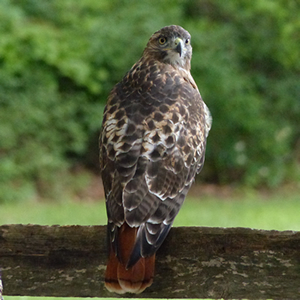
This adult Red-tailed Hawk appeared at Shark River Park recently and seems to have decided, like many other park patrons, this is a great place to hang out. This particular hawk appears to have become desensitized to humans and has startled some park patrons by sitting calmly on a fence post near the parking lot, a picnic table, or the playground. The hawk pays little attention to people, other than to gaze at them as they approach. A gaze from a Red-tailed hawk can be a little intimidating. This is our largest resident hawk (Buteo jamaicensis) and can be seen year round in Monmouth County. It weighs about 2.5 pounds and has 4 foot wing span. Red-tails feed primarily on small mammals such as mice, chipmunks and squirrels but will also take reptiles, amphibians and other birds. This individual may have been injured when young, raised by humans and released or it may have escaped from a Falconer. If you should happen to visit the park and see the Shark River Red-tail, enjoy this unusual opportunity. The hawk has been returned to the wild and should be considered a wild animal. As with any wild animal, do not try to touch or feed this hawk. Though they are not a threat to humans, raptors have powerful talons and sharp beaks and could accidentally cause a nasty injury. Posted 08/08/16
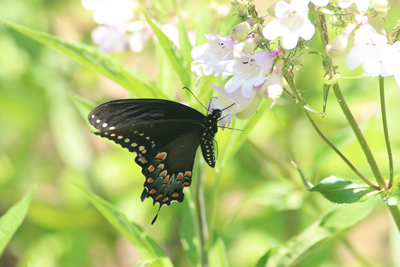
This black swallowtail was seen feeding on a cluster of foxglove beardstongue (Penstemon digitalis) blooming the Butterfly and Pollinator Garden at the Manasquan Reservoir Environmental Center, Howell. You can see the butterfly’s proboscis (a long slender tube which is used to sip nectar) entering the trumpet shaped flower. The black swallowtail butterfly became the official New Jersey state butterfly in January of this year. (posted 6/9/2016)
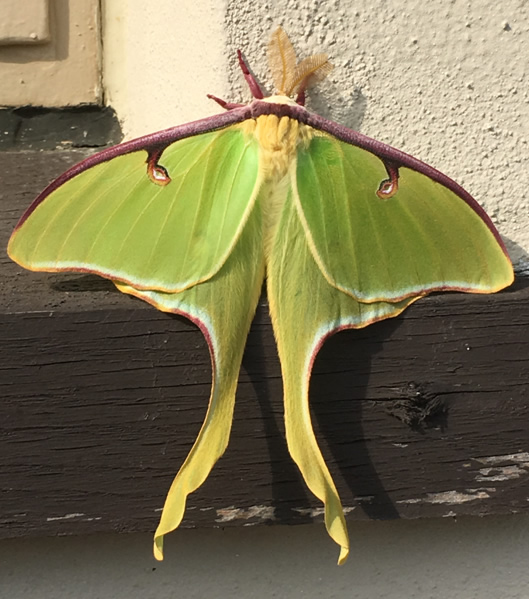
This luna moth was recently spotted enjoying a beautiful day on the side of the Huber Woods Environmental Center, Middletown. Emergence from its pupal form typically occurs in the mornings for this species to allow time for expansion and drying of the wings before its normal nocturnal activity. (posted on 5/31/16)
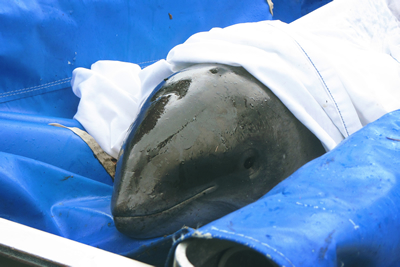
Recently, a sub-adult Harbor porpoise was found swimming in Wacckaack Creek in the Borough of Keansburg, near the Henry Hudson Trail. This marine mammal was likely pursuing a large school of fish in Raritan Bay and followed the fish into the creek, then got disoriented. Staff from the Marine Mammal Stranding Center located in Brigantine, NJ was called in to help safely remove the misplaced porpoise from the narrow creek and return it to open waters before injury. Harbor porpoises are one of the smallest of the oceanic cetaceans, its maximum length is about 6 feet. While it’s a common marine mammal during the colder months of the year to Monmouth County, the shy and elusive nature of the Harbor Porpoise makes it difficult for people to notice. (posted on 4/4/2016)
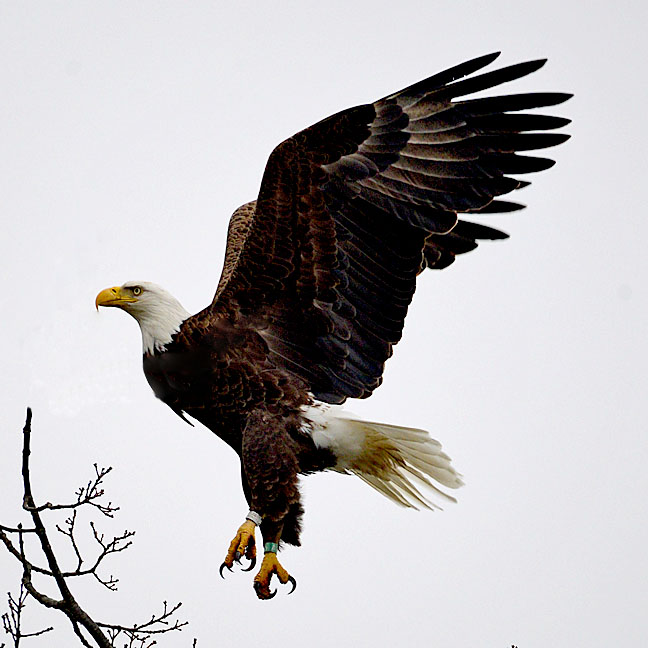
We are sad to inform you that on March 4, the eagles abandoned their eggs after 28 days of incubation. Possible reasons for this are: egg predation (a great horned owl, for example) or outside interference (humans too close to nest or another adult eagle). We suspect interference by another adult eagle. We have determined that our female is still here. The posted photo by Dennis Ruffe taken March 15 identifies her by the leg bands. We have yet to positively identify if it is still our same male, who has no leg bands. The pair is frequently seen together at the reservoir.
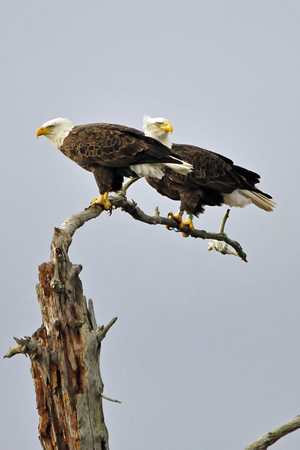
The Manasquan Reservoir eagles have moved their nest back to the shores of the reservoir. They have taken up residence in their favorite tree after nesting off park property during 2015. Incubation began on February 5, 2016.
The new nest is on a nesting platform built for them in 2012. That year the eagles’ nest was supported by a dead limb and near collapsing. The Endangered Species Division of the NJ Department of Environmental Protection (ENSP) had success “building nests” for eagles in other locations under similar circumstances. With the assistance of the ENSP, the Monmouth County Park System decided to try the platform at the Manasquan Reservoir for the eagle pair. Just before hurricane Sandy in October of that year, the nesting platform was built. It wasn’t until January 2016 that the eagles finally decided to use it.
This nest and the incubating eagles are easily viewed from the comforts of the Manasquan Reservoir Environmental Center (weather permitting). The staff is happy to answer any questions. Remember, nesting bald eagles are an endangered species and very sensitive. Disturbances can lead to nest abandonment. Please respect all laws and protections. (posted 2/16/2016)
Back to Nature Now